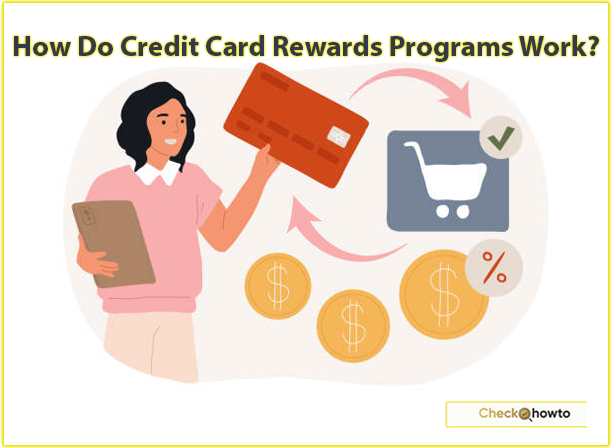Discover how credit card rewards programs work with this detailed guide. Learn about cash back, points, and miles, how to earn and redeem rewards, and tips to maximize benefits while avoiding pitfalls. Perfect for anyone looking to make their spending work smarter.

As someone who’s navigated the world of personal finance, I’ve learned that credit card rewards programs can be a game-changer for savvy spenders. You might be wondering, “How do these programs actually work, and how can I make the most of them?” Meanwhile, your friend—let’s say she’s a frequent traveler—might swear by her travel rewards card.
What Are Credit Card Rewards Programs?
A credit card rewards program is an incentive system offered by card issuers to encourage you to use their card for purchases. Essentially, when you spend money, you earn rewards in the form of cash back, points, or miles.
I first encountered this concept when I signed up for a cash back card, intrigued by the idea of earning a percentage of my spending back. For you, the appeal might be the ability to redeem points for gift cards or travel. For someone like my neighbor, who’s always jet-setting, miles for flights are the real draw.
These programs are funded primarily through interchange fees—small charges merchants pay to process card transactions. According to a 2024 analysis, these fees are what allow issuers to offer generous rewards without directly charging cardholders. The catch? You need to manage your card responsibly to avoid interest charges that could outweigh your rewards.
Types of Credit Card Rewards
When I started exploring rewards programs, I was surprised by the variety available. Here’s a breakdown of the main types to help you choose what suits your lifestyle:
1. Cash Back
Cash back cards return a percentage of your spending as money, either as a statement credit, check, or bank deposit. For example, my go-to card offers 2% cash back on all purchases, which I redeem as a statement credit to lower my bill. You might prefer a card with tiered rewards, like 5% back on groceries or gas.
2. Points
Points-based programs let you earn points per dollar spent, which you can redeem for gift cards, merchandise, or travel. My friend, who loves flexibility, uses a points card to shop at her favorite stores. Some cards, like those from Chase or Capital One, let you transfer points to travel partners for added value.
3. Travel Miles
Miles are ideal for frequent travelers. She—your travel-savvy friend—might earn miles on an airline-specific card, redeemable for flights or upgrades. General travel cards, like those from American Express, offer miles that can be used across multiple airlines or hotels.
Each type has its perks, but the best choice depends on your spending habits and goals. If you’re unsure, think about what you value most: cash, flexibility, or travel perks.
How Do You Earn Credit Card Rewards?
Earning rewards is straightforward, but maximizing them takes strategy. Here’s how it works:
- Base Rewards: Most cards offer a flat rate (e.g., 1 point per dollar spent). I use a flat-rate card for everyday purchases because it’s simple.
- Bonus Categories: Some cards offer higher rewards in specific categories, like 3% back on dining or 5% on rotating quarterly categories. You’ll need to activate these bonuses, as I learned after missing out on extra cash back one quarter.
- Welcome Bonuses: Many cards offer a sign-up bonus, like 50,000 points if you spend a certain amount within the first few months. She got a huge bonus on her travel card by timing a big purchase.
- Accelerated Rewards: Certain actions, like booking travel through the issuer’s portal, can earn extra points. I once earned double points by booking a hotel through my card’s travel site.
To maximize earnings, you should align your card’s bonus categories with your spending habits. For example, if you spend a lot on groceries, choose a card with high rewards in that category.
How Do You Redeem Credit Card Rewards?
Redeeming rewards is where the fun begins, but it’s also where you can lose value if you’re not careful. Here’s what I’ve learned about redemption options:
- Cash Back: The simplest option. You can often redeem cash back as a statement credit, direct deposit, or check. I prefer statement credits to offset my bill.
- Travel: Redeeming points or miles for flights, hotels, or car rentals can yield high value, especially if you transfer points to travel partners. She got a business-class flight for half the usual points by transferring to an airline partner.
- Gift Cards and Merchandise: Many programs let you redeem points for gift cards or products. However, these often provide lower value per point compared to travel or cash back.
- Experiences: Some issuers, like Chase, offer exclusive events or experiences. You might redeem points for concert tickets or a cooking class.
Pro Tip: Check the redemption value. For example, 1 point might be worth 1 cent for cash back but 1.5 cents when redeemed for travel. I always compare options to get the most bang for my buck.
Tips to Maximize Your Rewards
Over the years, I’ve picked up strategies to make rewards programs work harder for me. Here are some tips for you:
- Pay Your Balance in Full: Interest charges can wipe out your rewards. I always pay my balance to avoid fees.
- Choose the Right Card: Match the card to your spending. If you travel often, a miles card might be best. If you prefer simplicity, go for cash back.
- Track Your Rewards: Use apps like AwardWallet to monitor your points and miles. She uses it to avoid letting rewards expire.
- Understand Terms: Some programs have minimum redemption thresholds or fees. I once lost points because I didn’t read the fine print.
- Stay Informed: Issuers may change reward structures. The CFPB recently noted issues with “bait-and-switch” tactics, so check for updates.
Potential Pitfalls to Avoid
While rewards programs are enticing, they come with risks. I’ve made mistakes, and I want you to avoid them:
- Carrying a Balance: If you don’t pay off your card, interest charges can exceed your rewards. She learned this the hard way after racking up debt.
- Overspending: Don’t spend just to earn rewards. I stick to my budget to keep spending in check.
- Missing Deadlines: Points or miles can expire. You should set reminders to use them before they’re gone.
- Complex Programs: Some cards have complicated rules. If you’re new to rewards, start with a simple cash back card.
Are Credit Card Rewards Worth It?
In my experience, credit card rewards are worth it if you’re disciplined. For you, the value depends on how much you spend and how well you manage your card. For her, a frequent flyer, travel rewards are a no-brainer. The key is to choose a card that aligns with your goals, use it responsibly, and redeem rewards strategically.
According to a 2025 guide, rewards can save you hundreds annually if you optimize your strategy. However, if you carry a balance or don’t pay attention to terms, the costs can outweigh the benefits. Weigh your habits and financial discipline before diving in.
Conclusion
Credit card rewards programs offer a fantastic way to earn benefits from your everyday spending, whether it’s cash back, points, or miles. I’ve found them rewarding by choosing the right card and staying disciplined.
You can do the same by understanding how these programs work, aligning them with your spending, and avoiding common pitfalls. If she can turn her travel dreams into reality with miles, you can find a program that fits your goals too.



